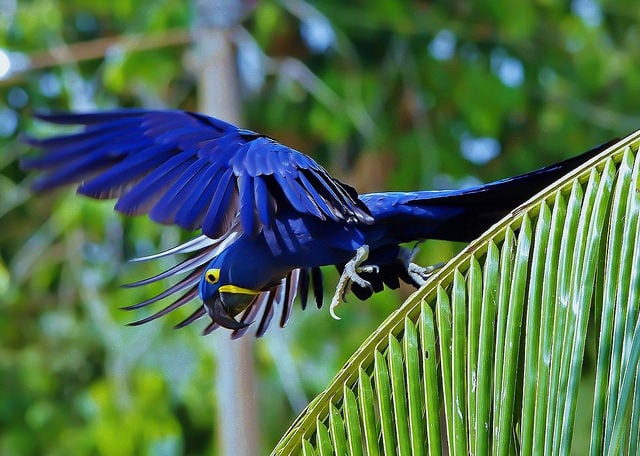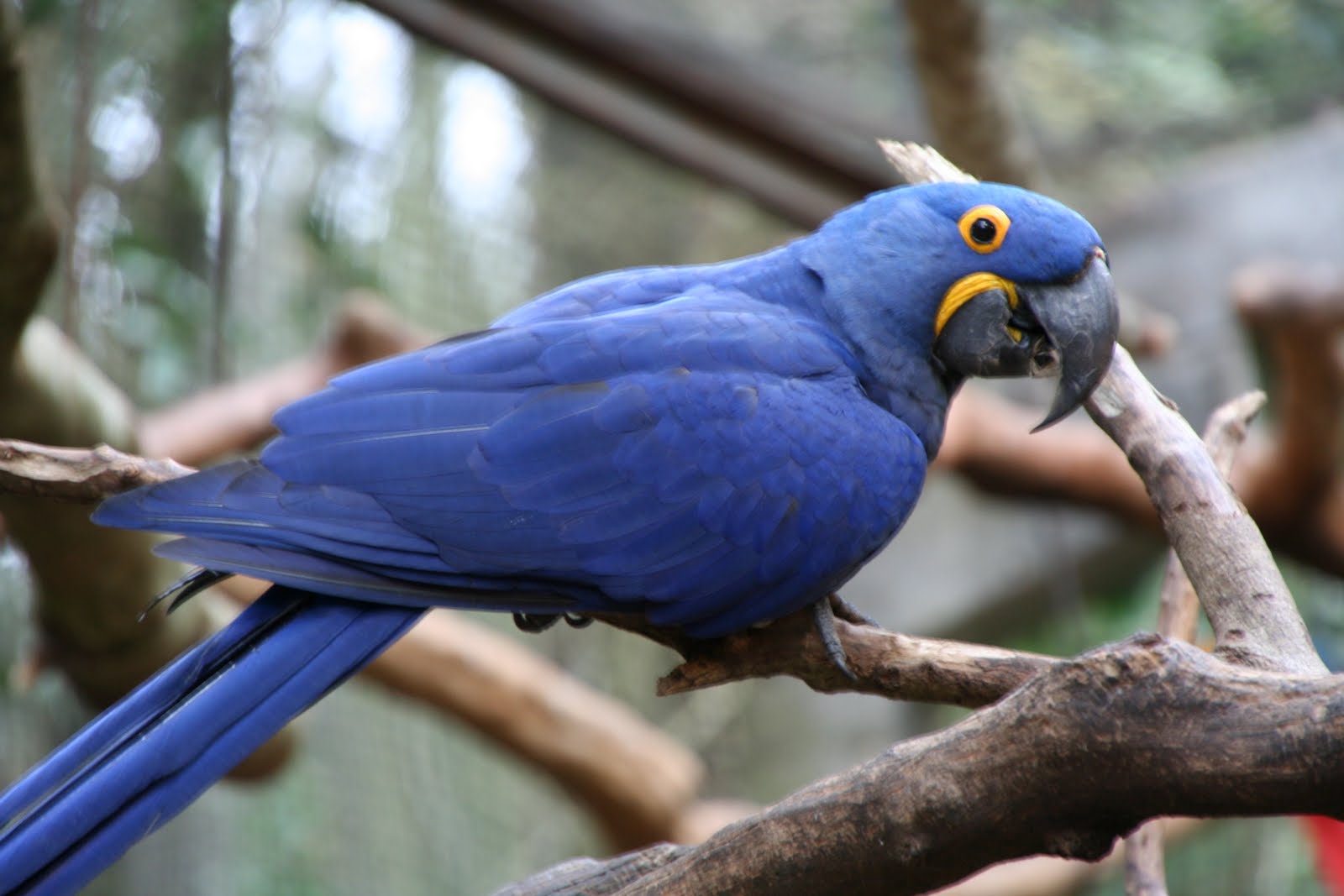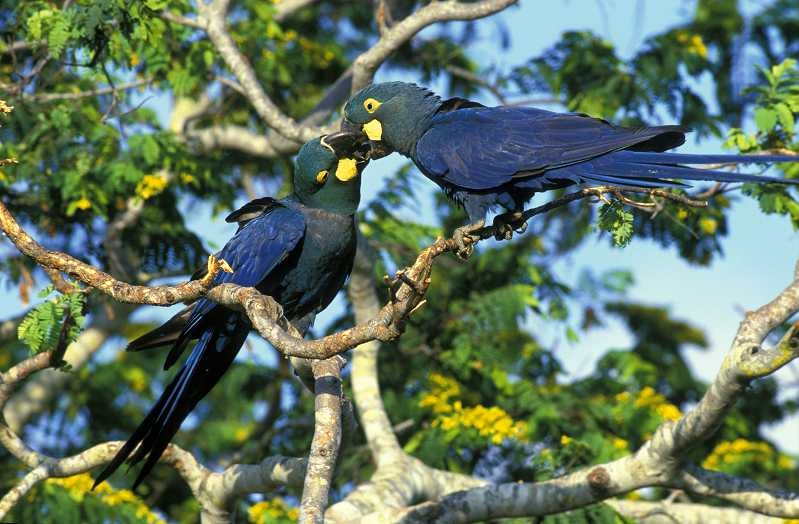The Lear’s Macaw, also known as the Indigo Macaw, is a critically endangered species of parrot that is native to northeastern Brazil. This stunning bird is known for its brilliant blue and yellow plumage, as well as its distinctive, curved beak and long tail feathers.

The Lear’s Macaw is a large parrot, measuring approximately 70 centimeters in length. Its body is predominantly blue, with yellow patches on its face, wings, and tail. Its beak is large and powerful, allowing it to crack open tough nuts and seeds, which make up a significant portion of its diet. In the wild, the Lear’s Macaw is also known to eat fruits, berries, and other plant materials.

These birds are social creatures and are often seen in flocks of up to 30 individuals. They are known for their intelligence and playful personalities, as well as their ability to mimic human speech and sounds.
Despite their beauty and popularity, Lear’s Macaws are facing a number of threats. Habitat loss, illegal capture for the pet trade, and hunting for their feathers and meat are all contributing to declines in their population. Additionally, the fragmentation of their habitat is limiting their ability to find suitable nesting sites and food sources.

Conservation efforts are underway to protect the Lear’s Macaw and its habitat. These efforts include the creation of protected areas, habitat restoration, and the implementation of anti-poaching measures. Additionally, captive breeding programs have been established to increase the number of individuals in the wild and to provide a source of birds for potential reintroduction programs.
In recent years, conservation efforts have shown promising results, with the Lear’s Macaw population slowly increasing. However, the species remains critically endangered and continued efforts are needed to ensure its survival in the wild.
In conclusion, the Lear’s Macaw is a stunningly beautiful and intelligent bird that is an important part of Brazil’s natural heritage. With its brilliant blue and yellow plumage and playful personality, this bird has captured the hearts of birdwatchers and nature enthusiasts around the world. While it faces a number of threats, conservation efforts are underway to protect the Lear’s Macaw and ensure that it continues to thrive in the wild.








